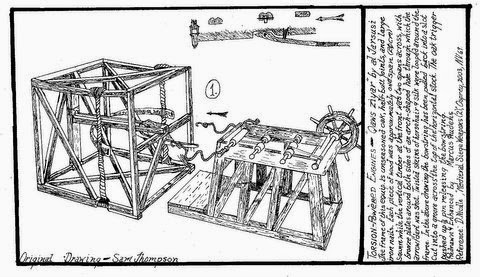Thursday, September 18, 2014
Manjaniq (Early) # 2
Tuesday, September 16, 2014
Pyrotechnic Weapon; Greek Fire Syphon
Torsion-Powered Engine - Byzantine "alakation or ballista"
Torsion-Powered Engine; "Qaws ziyar" by al Tarsusi
Thursday, September 11, 2014
Shabakah -3, Back Side
Shabakah 1
Sunday, August 31, 2014
Pyrotechnic Weapons -- Naft Zarraga
Pyrotecnic Weapons, Hand-gun late 14th century
Monday, August 11, 2014
Tuesday, August 5, 2014
Thursday, July 31, 2014
Sunday, July 27, 2014
Monday, July 14, 2014
Friday, July 11, 2014
Tuesday, July 8, 2014
Three styles of "Manjaniq," or catapult
Tuesday, July 1, 2014
Monday, June 30, 2014
Friday, June 27, 2014
Sunday, June 22, 2014
Baghdad; Round City and section through gate - Abbasid, Iraq
Friday, June 20, 2014
Qala'at Rustaq, Early Islamic Oman
Monday, April 7, 2014
"Ship's Prow Tortoise" #7
"Ship's Prow Tortoise" #5
"Ship's Prow Tortoise" #2
"Ship's Prow Tortoise" #1
Friday, March 21, 2014
Subscribe to:
Posts (Atom)





































